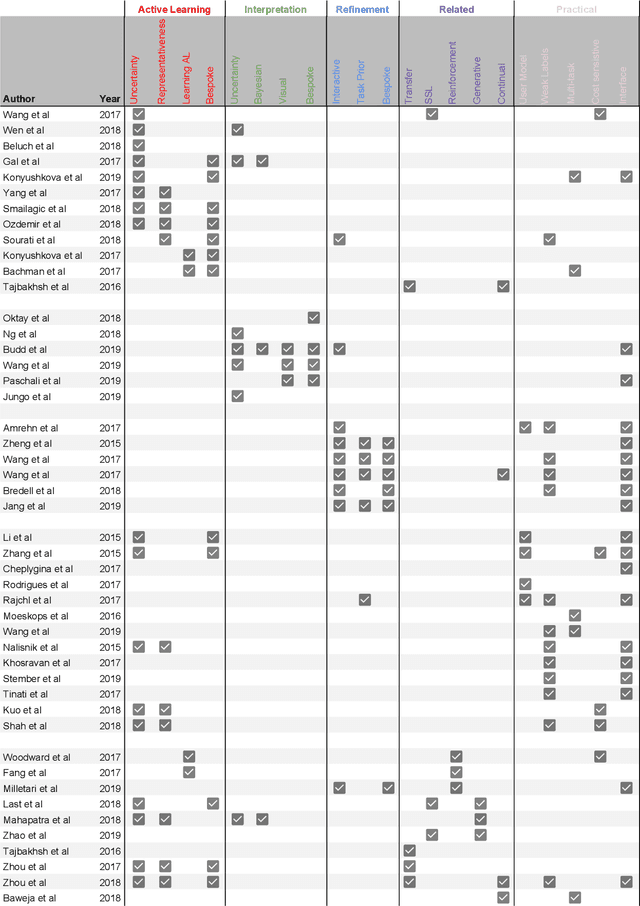A Survey on Active Learning and Human-in-the-Loop Deep Learning for Medical Image Analysis
Paper and Code
Oct 07, 2019



Fully automatic deep learning has become the state-of-the-art technique for many tasks including image acquisition, analysis and interpretation, and for the extraction of clinically useful information for computer-aided detection, diagnosis, treatment planning, intervention and therapy. However, the unique challenges posed by medical image analysis suggest that retaining a human end-user in any deep learning enabled system will be beneficial. In this review we investigate the role that humans might play in the development and deployment of deep learning enabled diagnostic applications and focus on techniques that will retain a significant input from a human end user. Human-in-the-Loop computing is an area that we see as increasingly important in future research due to the safety-critical nature of working in the medical domain. We evaluate four key areas that we consider vital for deep learning in the clinical practice: (1) Active Learning - to choose the best data to annotate for optimal model performance; (2) Interpretation and Refinement - using iterative feedback to steer models to optima for a given prediction and offering meaningful ways to interpret and respond to predictions; (3) Practical considerations - developing full scale applications and the key considerations that need to be made before deployment; (4) Related Areas - research fields that will benefit human-in-the-loop computing as they evolve. We offer our opinions on the most promising directions of research and how various aspects of each area might be unified towards common goals.
 Add to Chrome
Add to Chrome Add to Firefox
Add to Firefox Add to Edge
Add to Edge